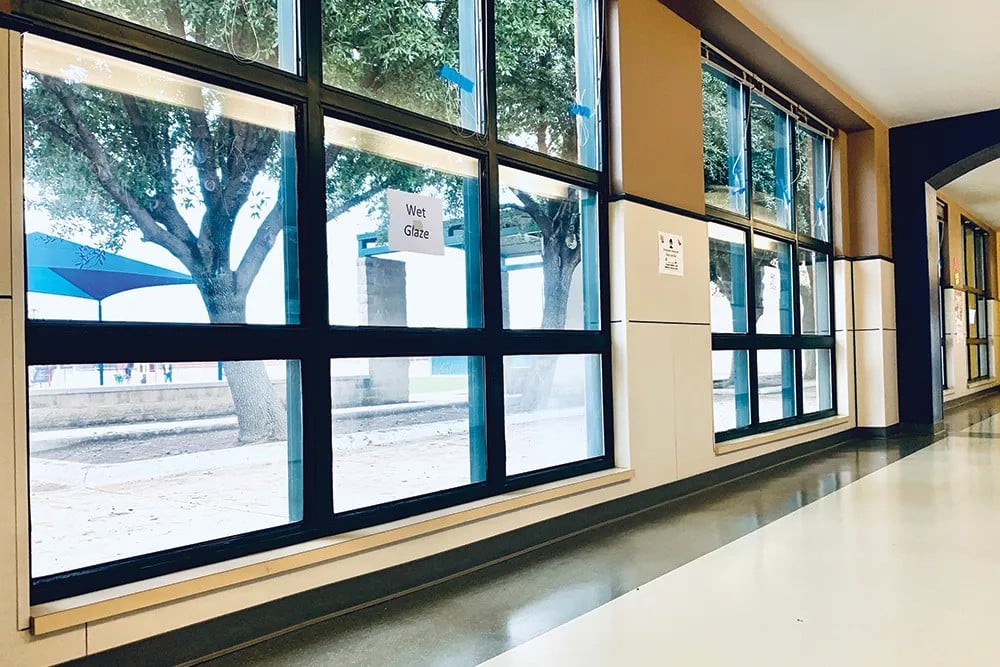Over the past several decades, violence against churches, schools, and other soft targets in the United States has unfortunately been on the rise. In response, these institutions have turned to various security measures to protect their communities. From increased surveillance and controlled access to reinforced construction materials, the goal is always the same: buy time, slow intruders down, and save lives.
One of the more commonly adopted upgrades is using security window film. When applied correctly, window film can be critical in delaying forced entry.
However, despite its benefits, there is a lot of misinformation in the market about what this product does. Salespeople and companies sometimes exaggerate their capabilities, and many installers don’t follow the specifications required to make the film truly effective.
When installed properly, security film can significantly delay an intruder attempting to break through a window. Its effectiveness, though, depends on the type of film used and the kind of glass it’s applied to. Even more important is an appropriate attachment system, which secures the film and glass to the window frame. Without this system, the film adds only three to four seconds of resistance—barely enough to matter.
However, when a proper attachment is used, that delay can stretch from 45 seconds to several minutes. That extra time can make all the difference, giving people inside the building a chance to find shelter and allowing law enforcement time to respond. In many cases, intruders are unwilling to spend that long exposed and vulnerable and will move on to an easier target.
Unfortunately, misinformation doesn’t stop at attachment systems. Some companies go so far as to claim that security film makes windows bullet-resistant. They back these claims with live demonstrations or testing videos, which may look impressive on the surface but often rely on misleading setups. These tests are frequently performed on 3/8-inch or even 1/2-inch annealed glass. Glass that already possesses some degree of bullet resistance.
The reality is that most buildings are not outfitted with this type of glass, and applying security film to standard glass will not achieve the level of protection these companies suggest. In order to truly resist bullets, windows must be replaced with specialized, rated materials, which come with a significantly higher cost.
Beyond exaggerated marketing, another issue is the lack of qualified installers. Many people applying these films are not trained or experienced enough to follow the manufacturer’s guidelines, and even minor mistakes during the installation process can compromise the film’s performance when it’s needed most. A rushed or improper installation might look fine to the untrained eye, but it won’t hold up under the stress of a real attack.
If your facility is considering window film as part of its security strategy, working with experienced professionals using trusted products is critical. Installation must be handled properly and must include a secure attachment system to deliver meaningful protection.
Doing it the right way ensures that your security team—and law enforcement—have the time they need to respond while giving the people inside your building the best chance of staying safe.
Kyle Vanden Bosch is a window and door security expert with StrongGlass Systems, nationwide experts in 3M security window film, www.strongglassusa.com.





